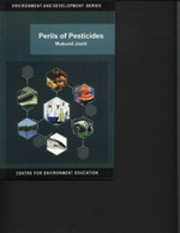1 - Introduction
Published online by Cambridge University Press: 26 October 2011
Summary
Pesticides include an array of chemicals used to destroy crop pests, household pests and vermin. They are commonly called insecticides, fungicides, bactericides, weedicides (also called herbicides) or rodenticides. Some pesticides are able to kill a wide spectrum of insects/weeds, while some are specifically developed against particular insects/pathogens/weeds. In no case can a pesticide be both an insecticide and fungicide or an insecticide and weedicide.
Every pesticide is designed to disrupt the normal physiological activities of an organism, against which it is applied. Hence, it may cause death or physiological dysfunction of such an organism, or reduce its vitality. It may even act as a repellant to keep the pest away. Pesticides were created on the basis that a pest is an unwanted organism in an unwanted place that deserves to be eliminated or rendered physiologically dysfunctional. But, this ignores the fundamental fact of nature that a pest is an organism living in an ecosystem with its life process closely linked to other components of the ecosystem.
When a pest is killed, the ecological equilibrium between various organisms is upset. In the natural process, other organisms replace the pest or the pest itself will produce a variant strain, which may or may not be affected by that specific pesticide. As each pest is a part of the food chain, the reduced pest population may also induce reduced population of organisms feeding on such pests at the higher trophic level.
- Type
- Chapter
- Information
- Perils of Pesticides , pp. 1 - 3Publisher: Foundation BooksPrint publication year: 2005



